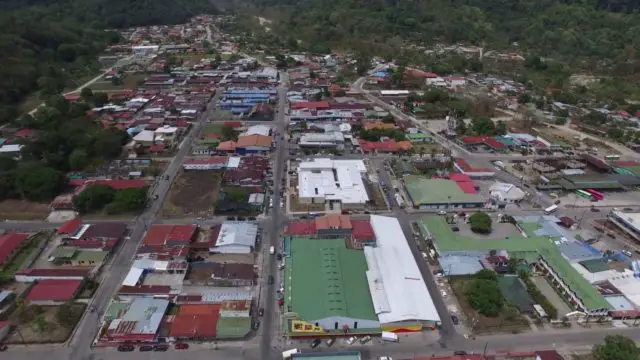Located in the canton of Corredores is “Ciudad Neily”, a town that combines exotic beauty and urban lifestyle. Neily is part of the largest province in Costa Rica, Puntarenas, one of the most popular tourist destinations. The province is known for its lush wildlife and amazing adventures, which makes it a very interesting place to visit during your vacation in Costa Rica.

Neily is the town, head of the Corredores canton and its first Corredor district, at the southern tip of the province of Puntarenas, Costa Rica. It is located 18 kilometers from the national border with Panama in Paso Canoas and 342 km south of the capital San José, at an altitude of 46 meters above sea level and on the banks of the Caño Seco and Corredor rivers.
Its name is a reference and tribute to Ricardo Neily Jop (1912-2000 †), a citizen of Lebanese origin founder of the city. The Corredor district has an area of 272.19 km² and an estimated population of 27,000 inhabitants (2018).
Brief historical review of Ciudad Neily

Neily was founded in 1946, is originally a small scattered hamlet, so it had a category of the villa. In its economic and demographic development, the area benefited from the construction of the Inter-American Highway and the arrival at Golfito of the United Fruit Company.
As a result of the population increase, between 1939 and 1940 an immigrant of Lebanese origin, Ricardo Neilly Jop acquired extensive property in the region and installed a sort of commissary at the service of banana workers. He then sold a series of plots to merchants who established their businesses in the region. In this way, Villa Neilly emerged as an entertainment center for banana workers on farms located in Golfito.
Subsequently, the Banana Company in 1945 began cultivating in the Coto Valley directly promoting the commercial and residential development of the area. In the executive decree No. 38 of June 16, 1961, the town called Villa Neily constituted a hamlet in the third district of La Cuesta in the canton of Golfito. In the administration of Mr. José Joaquín Trejos Fernández on April 27, 1970, in executive decree No. 24, the title of Villa was granted to the population of Neily head of the Corredor district, created on that occasion, fourth of the canton of Golfito. Subsequently, on October 19, 1973, in the second government of Mr. José Figueres Ferrer, Law No.5373 was enacted, which established the canton of Corridors and conferred the category of town.
The current church was built in 1966, dedicated to Santa Marta. In the archbishopric of Monsignor Don Román Arrieta Villalobos, the fifth archbishop of Costa Rica, in 1985, the parish was erected; which is currently a suffragan of the diocese of San Isidro de El General of the ecclesiastical province of Costa Rica.
Today Neily is an active commercial scepter that satisfies all the main needs of its inhabitants. After San Isidro de El General, it is the second-largest population in the Brunca Region and the Southern Zone of Costa Rica. The climate is very humid; the temperatures oscillate annually between 25 and 35 ºC. Neily is 46 meters above sea level. Geography. The Corredor district is mostly flat and of low altitude, with an alluvial plain prone to continuous flooding. The main river is the Coto Colorado, in the Esquinas river basin, of torrential course, and with great sediment contribution. Some important tributaries that join it are the Caracol, Nuevo, Caño Seco, Corredor, Abrojo, Coloradito and La Vaca, some of them connected through channels.
Neily was settled in an area of gentle slope to the south, however, to the north of the city is the “Fila de Cal”, an important foothill of the Fila Brunqueña that has a maximum altitude of almost 1100 meters above sea level, and serves as a cantonal limit between Corredor and Coto Brus. To communicate Neily with San Vito, a narrow and winding road was built that requires extreme caution for its transit in some sections, due to its abrupt topography in a few kilometers. The type of soil is fertile, the humid climate with heavy rains in the rainy season. Some sectors still conserve primary-type forests but due to banana and agricultural activity the soil has been irrationally exploited and forests have largely disappeared from the territory.
Economy
The area benefits from trade with the neighboring country Panama. The main economic activities of the Corredor district are the crops of African palm, banana, cocoa, rice, corn, vegetables, beans, and sorghum, as well as livestock and forestry. But in the center of the town of Neily commercial activities of all kinds are developed, these businesses are a source of income for a large part of the population.

